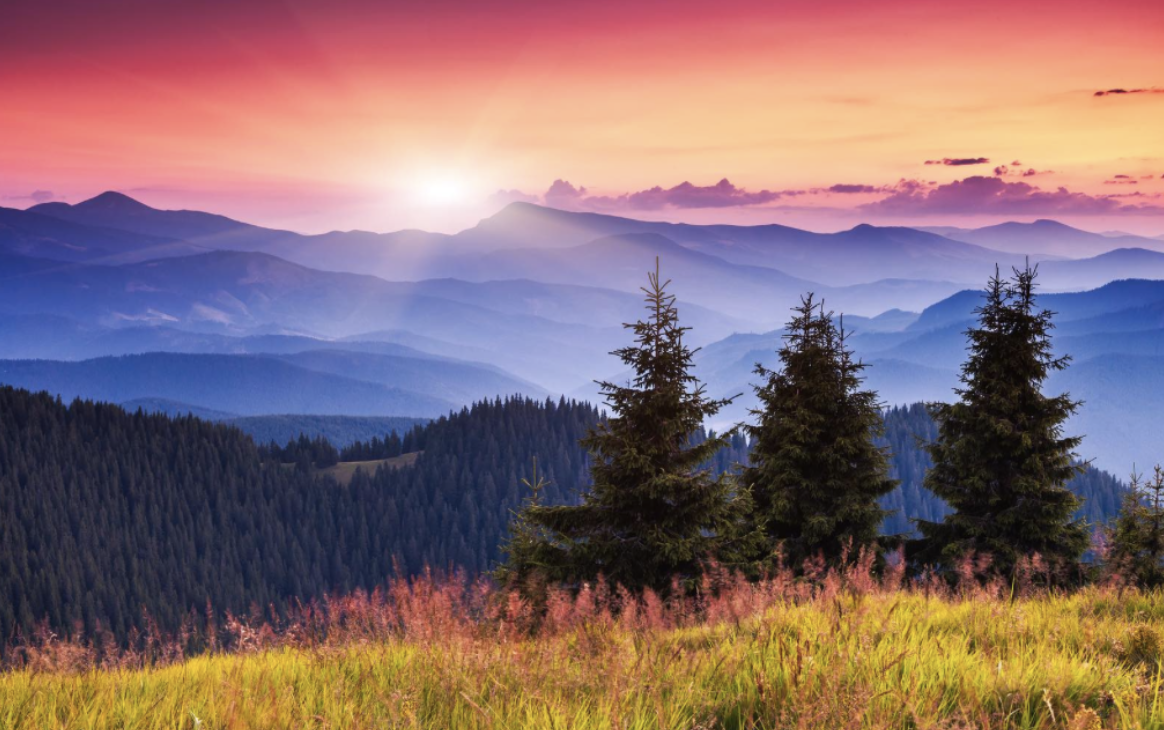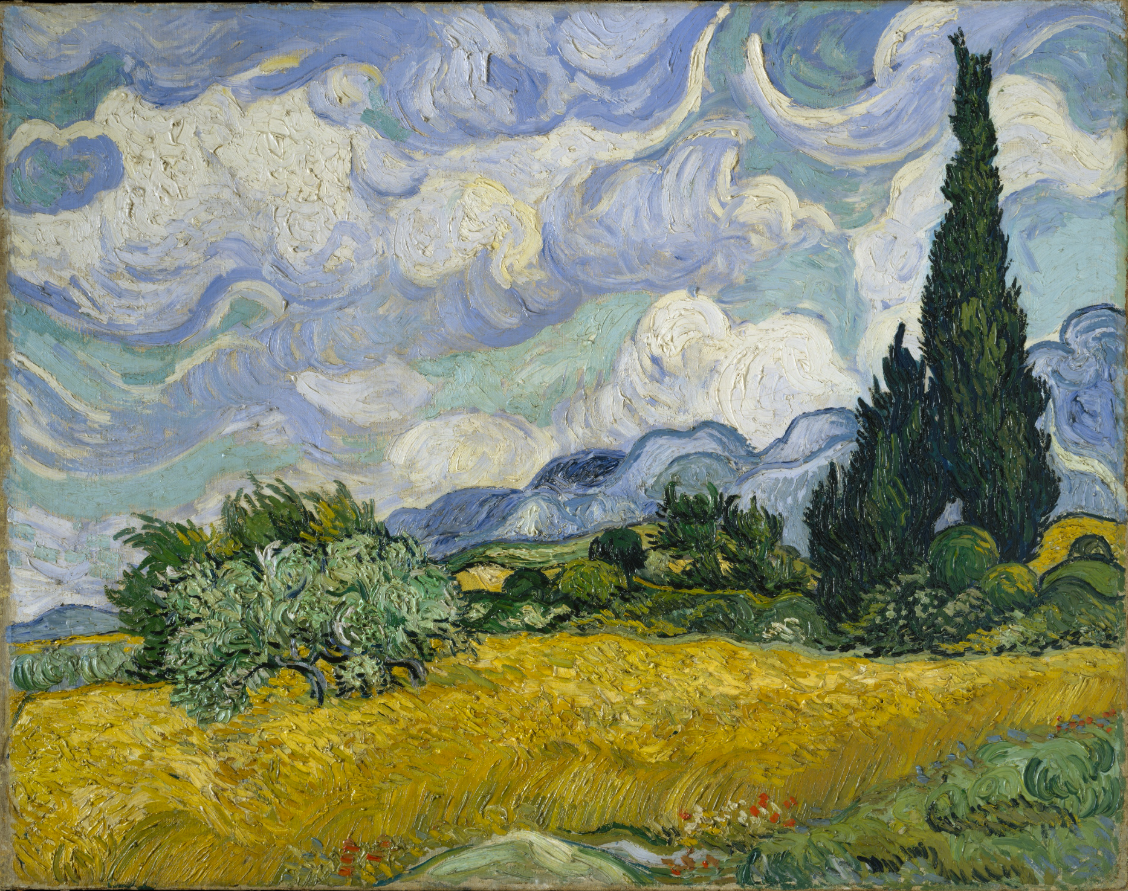Overview
Students will experiment with using a variety of marks, lines, and shapes to create a landscape drawing.
Materials and Tools
- White drawing paper
- Ebony pencil
- Landscape reference images
Objectives
Students will understand that:
- Marks, lines, and shapes can be arranged to create a landscape drawing.
Students will be able to:
- Use reference imagery to create an imaginary landscape drawing by arranging a variety of different marks, lines, and shapes.
Activities
Introduce Landscapes
Landscape artworks depict a natural scene and may include features such as mountains, valleys, water, fields, forests, and coasts.

A landscape will typically, although not always, include:
- Foreground: The part of the landscape that appears largest and closest to the viewer.
- Middle Ground: The area between the foreground and background, where objects appear slightly smaller and further away.
- Background: The furthest part of the landscape, usually including the horizon and distant elements.
- Sky

Drawing 1: Model Exploring Marks, Lines and Shapes
Model using a pencil with different grips to make varying thicknesses and intensities of different marks, lines, and shapes in an exploratory drawing.
Drawing 2: Model Beginning a Landscape Drawing
Model looking closely and using a reference image as inspiration to begin an expressive landscape drawing that combines a variety of marks, lines, and shapes.
Work Time:
Have students:
- Drawing 1: Experiment by filling a page with different marks, lines, and shapes. Use different pencil grips to make varying thicknesses and intensities.
- Drawing 2: Choose a reference image to use as inspiration to create an expressive landscape drawing that combines a variety of marks, lines, and shapes.
Reflection
- What is something new you learned about landscapes?
- How did you make your landscape drawing?
Resources
Vincent van Gogh, Wheat Field with Cypresses at the Haude Galline Near Eygalieres

